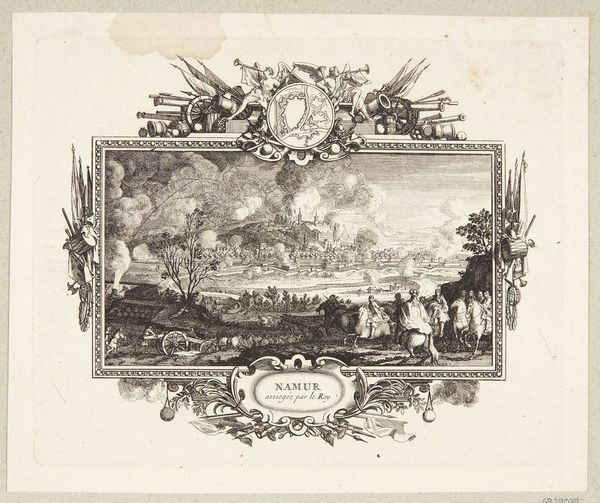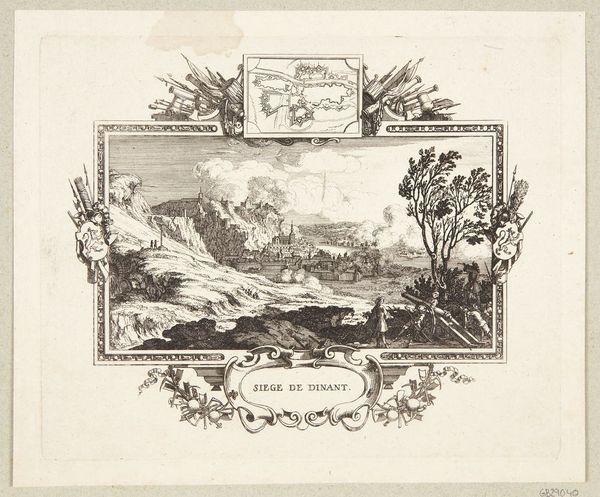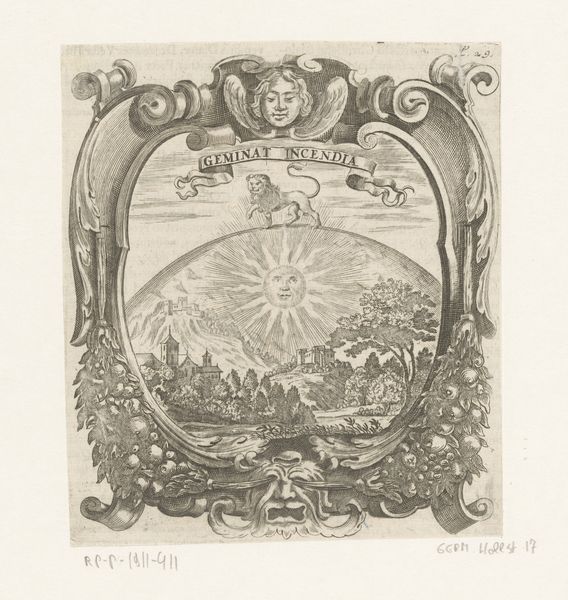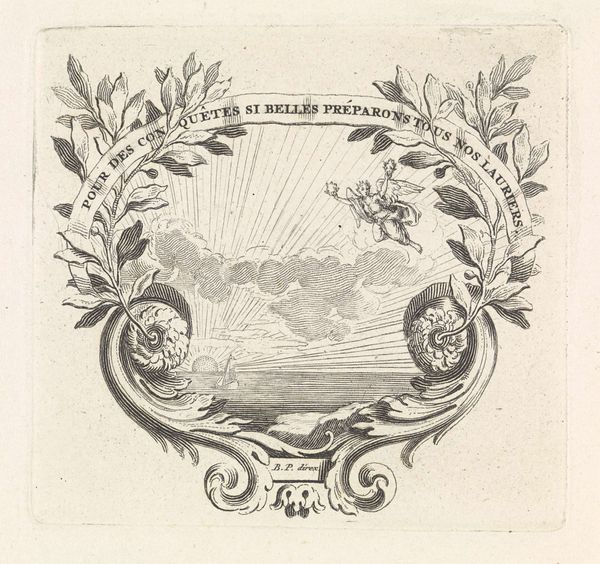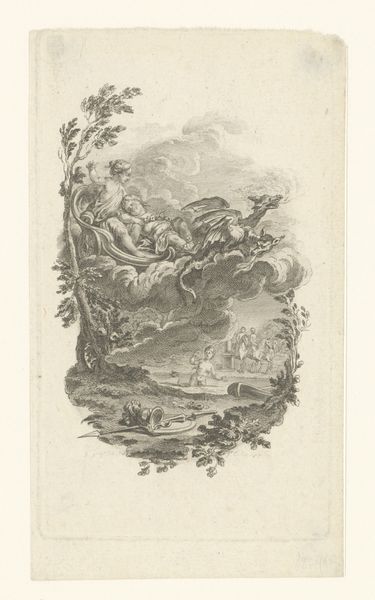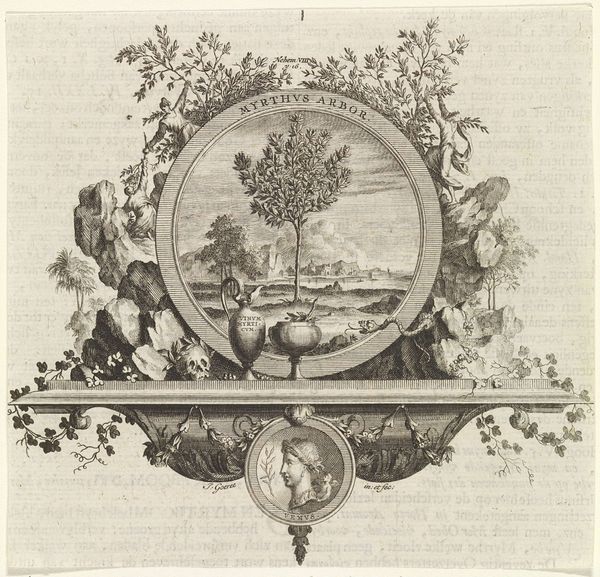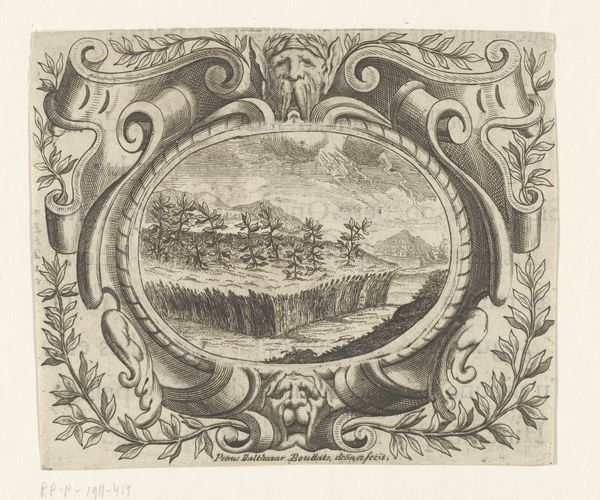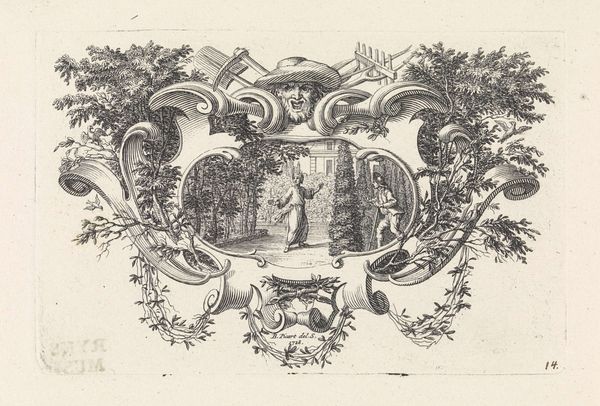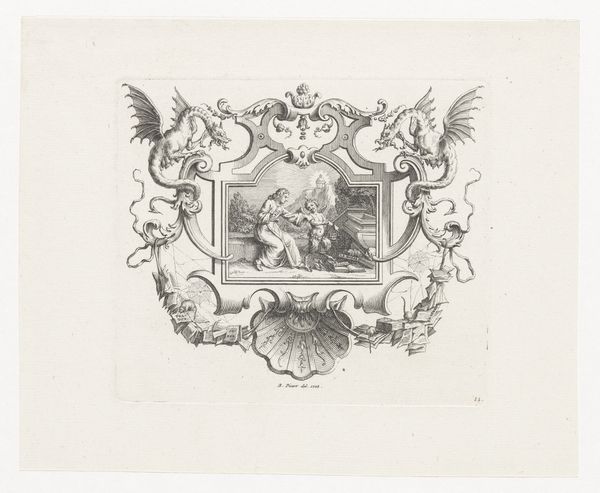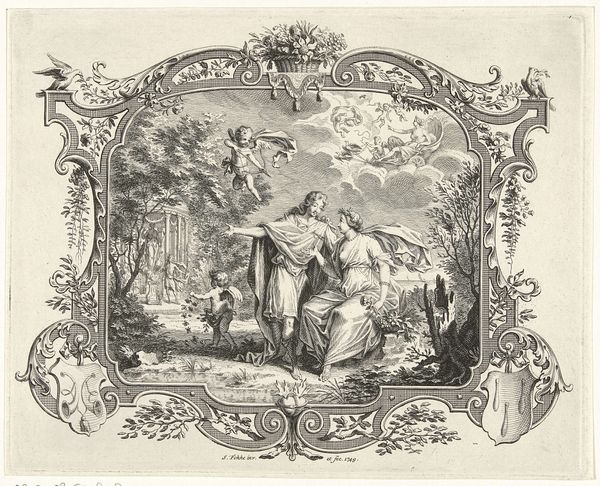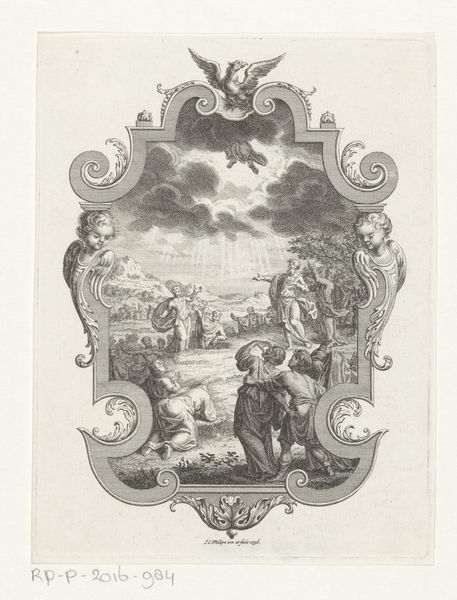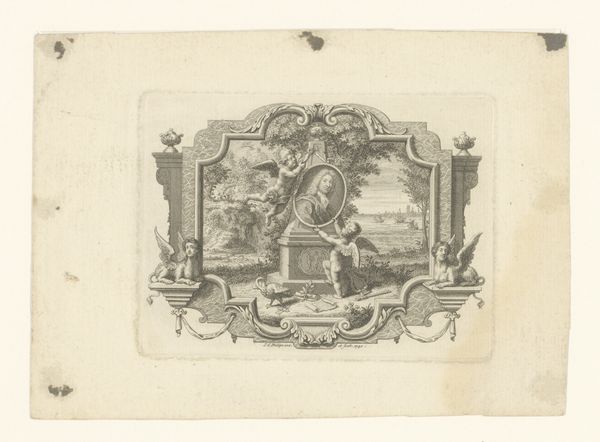
print, engraving
#
baroque
# print
#
pen sketch
#
old engraving style
#
landscape
#
figuration
#
line
#
history-painting
#
engraving
Dimensions: height 122 mm, width 137 mm
Copyright: Rijks Museum: Open Domain
Curator: Bernard Picart's 1728 engraving, “Tetragram en zon en maan in ornamentele omlijsting,” which translates to “Tetragram and sun and moon in ornamental frame," draws us into a landscape steeped in symbolism. It's currently held in the collection of the Rijksmuseum. Editor: The first thing that strikes me is the precision of the engraving. The textures created simply with lines—the churning clouds versus the serene landscape below—it's fascinating to see the materiality give way to such evocative imagery. Curator: Absolutely, and it is within those clouds that we find the Tetragrammaton, the four Hebrew letters representing the name of God, emitting radiant beams. Note how it dominates the upper portion of the work, positioned above a landscape featuring both the sun and moon. The engraving thus carries the weight of deeply ingrained religious iconography. The landscape recalls a history painting with allusions to classical compositions. Editor: The conscious layering of those iconographic elements – a name that must not be uttered, the celestial bodies, rendered in the stark black and white achievable with engraving technology of the period – speaks volumes about the artist’s control over his means. It makes me consider who the audience was, how such an object might have been displayed, used, and subsequently valued within its original cultural context. Was it part of an exclusive exchange? Curator: Precisely, and that’s where cultural memory comes into play. Consider the broader context: the 18th century was an age defined by both reason and religious fervor. Images like these reinforced existing power structures and acted as potent visual reminders of divine presence. Note, also, how the decorative frame adds layers of ornamental context. These embellishments reflect contemporary tastes, and create a stage upon which these elements engage. The artist clearly expected learned viewers to be attentive to symbolism and textual connections. Editor: So, for me, analyzing this engraving becomes a journey into the artist’s world - not just of subject matter, but a consideration of paper, ink, and the physical act of carving that birthed this durable little object, pregnant with meaning. Curator: Agreed. Looking at Picart's print, we recognize a dance between materials, skill, and cultural values that, in turn, invite us to engage in that same intricate, illuminating exchange.
Comments
No comments
Be the first to comment and join the conversation on the ultimate creative platform.
